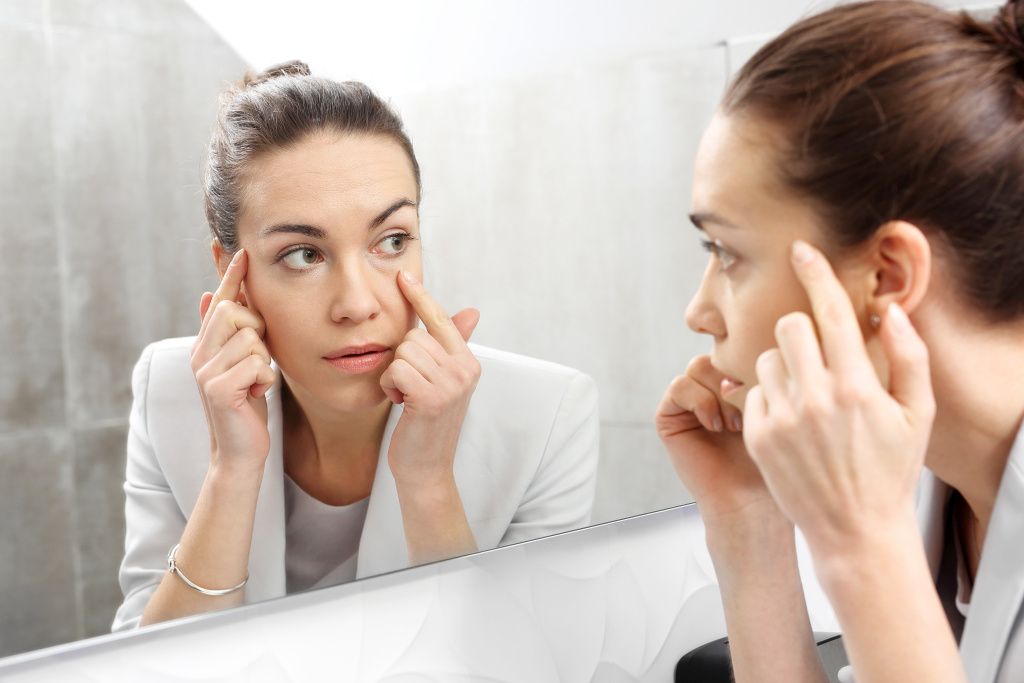Elevated cholesterol levels can affect the condition of the entire body. One of the symptoms to watch out for is gray and tired skin. What is the effect of cholesterol on skin condition and what can be done to enjoy a beautiful appearance and good health?
Cholesterol is an indicator that, in the right concentration, positively affects the functioning of the body. It participates in the production of sex hormones, affects the production of vitamin D, so it contributes to improving the body’s immunity. An increase in cholesterol levels, especially LDL, known as „bad” cholesterol, is of concern. It can contribute to cardiovascular diseases: hypertension, atherosclerosis, heart attack, stroke.
When a patient learns at a checkup that he has elevated cholesterol, he is most often surprised by it. Cholesterol produces non-obvious symptoms that can be overlooked if one is unaware that they may be related to poor diet and nutrition.
Symptoms of elevated cholesterol
Elevated or high cholesterol affects many processes in the body. If neglected, it can lead to hypercholesterolemia, which results not only in cardiovascular disease, but also in neurodegradation of cells. This one can contribute to the development of nervous system diseases, including. cognitive impairment, Alzheimer’s or Parkinson’s disease[1].
Problems with concentration, memory and attention are among the nervous system symptoms that are associated with too high cholesterol levels. Other symptoms include leg pain, which can be caused by circulatory disorders, or calf cramps, which are most often associated with a lack of magnesium.
In addition, characteristic yellow thickenings may appear on the skin (including around the eyelids), which are indicative of impaired lipid metabolism. They are called yellows, and their size depends on the concentration of cholesterol. In cases of hypercholesterolemia, yellow thickenings may also appear in other areas of the body.
Skin symptoms of high cholesterol
Elevated cholesterol levels also take a toll on the condition of the skin, which becomes gray, tired, earthy. It often loses its glow and looks as if it is over-dried and lacking in nutrients.
In addition to this, a clear signal from the body indicating that the lipid content is too high are dark circles under the eyes. When the eyes are darkened and the shadows are pronounced (and they are not the result of insomnia or intermittent sleep), it is worthwhile to test cholesterol levels.

The first course of action in such a situation (especially for women) is to reach for cosmetic products to correct the problem. Unfortunately, in such a situation even the most expensive creams won’t help, because the causes of dark circles under the eyes and sallow, tired skin lie inside the body.
How often to test cholesterol levels?
People over 40. age or those who are genetically burdened with cardiovascular disease should test cholesterol regularly once a year. For those below this age threshold, cholesterol testing should be done prophylactically once every two to three years, depending on the health of the body.
On the other hand, if anything worries us, or if symptoms have appeared from the body, the cause of which we do not know (such as the just deteriorated appearance of the complexion or leg cramps), it is worth going to an internist and reporting the problem to him. It does not take much time to perform a lipidogram, and it can help improve your health.
How to improve the appearance of the skin?
If a lipidogram indicates a lipid disorder, most often the doctor will recommend lifestyle and dietary changes. Consumption of fats of animal origin should be reduced in favor of those from plant sources. Thus, it is worth including extra virgin olive oil, vegetable oils, avocados in the diet.
It is extremely beneficial for the work of the cardiovascular system to enrich the diet with fish and seafood, which are a source of omega-3 and omega-6 acids. They help stabilize the heart, prevent arrhythmias, have a beneficial effect on vascular function, regulating blood pressure and reducing the risk of hypertension.
In addition, it is worth consuming whole grain products, which provide the body with potassium, magnesium and B vitamins, which have documented health-promoting effects on heart function and the nervous system. In addition, folate and B vitamins (contained not only in cereals, but also in spinach or parsley and legumes) are excellent for skin health, improving its appearance and restoring its health.
It is also necessary to properly hydrate the body and consume a minimum of 2 liters of water per day. This helps cleanse the body of toxins and harmful substances, as well as remove excess LDL, the „bad” cholesterol that tends to build up in the walls of vessels.
In addition, hydration has a sensational effect on the skin. Moisturized skin becomes soft and supple, retains youth and firmness longer. Water retained deep in the layers of the skin makes it less susceptible to damage and injury from free radicals and external factors, so it ages later.
After consulting your doctor, you can also turn to dietary supplements to improve microcirculation and help maintain proper blood cholesterol levels. Berimal is a preparation that contains ActiBPF, a standardized production of polyphenols from bergamot, and garlic extract standardized for its high allicin content. It helps maintain proper glucose and cholesterol levels and supports microcirculation.
[1] Maria Uzarowska, Magdalena Surman, Marcelina Janik, Two faces of cholesterol – physiological significance and participation in the pathogenesis of selected diseases. Cosmos. Problems of biological sciences, vol. 68, 2018.
